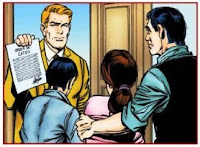At Preventing Hurricane Sandy’s Destructive Course
Wire service report
Global warming debunker and Tea Party Science strategist Benjamin Franklin Buchanan was the first expert to go on record today faulting un-named “…Democrat Presidential appointees in the National Weather Service…” for the destructive and disastrous path of Hurricane Sandy along the Eastern seacoast of the United States.
Speaking before news analysts from Fox 61 and Christopher Ruddy’s NewsMax Media services, Mr. Buchanan made clear his case that if Obama had spent less time obsessing about killing off Osama Bin Laden, or planning for health care for sick poor people, then science researchers would have known, and could have warned coastal citizens months ago, of a late season storm that might wreak havoc and destroy things.
Mr. Buchanan had been scheduled to host a late election season Romney / Ryan fundraiser at his newly finished $27.6 million dollar compound on San Simeon Island off the coasts of Georgia and South Carolina. Mr. Buchanan poured a fortune into creating a replica of the main house of the John Sargent Cram Estate. Close to one million dollars alone was spent moving the sand dunes, with their unsightly scrub grasses, so he could enjoy an unimpeded view of the ocean. The fundraiser was to be his first gala event at the compound.
Instead, the seafront estate and private beach were among the first casualties of this supposedly unprecedented storm. As a result, the fete had to be cancelled.
Mr. Buchanan said that invited guests could send wire transfers to the Safe-Vote PAC fund account in care of the Medellín Consortium International Bank, (Netherlands Antilles) in lieu of the cash-stuffed suitcases that would have been used had the event place at the Estate.
In the midst of this tragedy, Mr. Buchanan noted that the National Climatic Data Center (NCDC) and the Socialistic Environmental Defense Fund (EDF) have tried to capitalize on the public's concerns by attempting to gain headlines by trying to tie the tragic losses from Hurricane Sandy to “...so-called global warming.” Mr. Buchanan decried this as "...shameless fear-mongering."
Buchanan said he remained mystified why almost all of his private compound was decimated (including his private airstrip) although the servants' shanties – a mile from the shoreline in the woods – remained unscathed.
In fairness, and placing things in perspective, he also said that the real estate agent who sold him the 22 acre ocean front estate three years ago, should have warned him that hurricanes sometimes inexplicably attack luxury properties.
While profoundly saddened by the loss of his personal collection of cast iron Pickaninny statuettes that once dotted the estate (“ Most of those, I know, are irreplaceable.”), he said he takes comfort in knowing that Federal flood insurance will be able to pay for the reconstruction of most, if not all, of the ruined compound.
IMAGE SOURCES: NOAA - Hurricane Sandy; Gary Lawrance's blog - Mansions of the Gilded Era







































